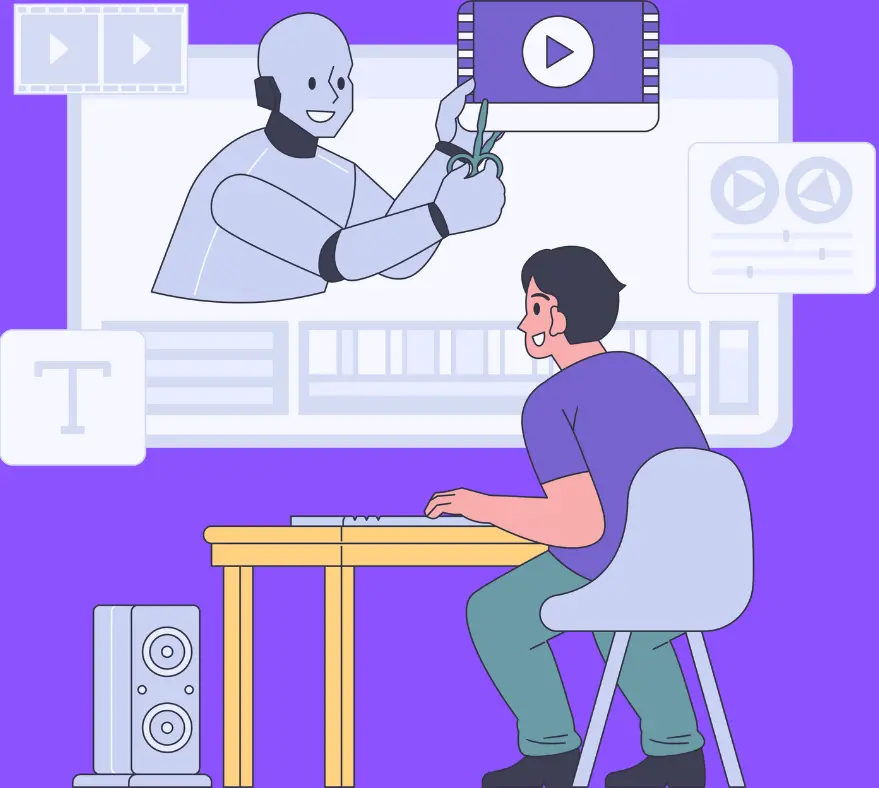
We’ve all been there—cozied up on the couch, engrossed in our favorite TV show, when suddenly, a flashy TV commercial bursts onto the screen. Whether it’s a catchy jingle, a hilarious punchline, or an emotional story, some commercials stick with us long after the show ends. But have you ever wondered what goes on behind the scenes to bring these TV commercials to life? Buckle up because we’re about to dive into the fascinating journey of “From Concept to Screen: The Making of a TV Commercial.”
The Big Idea: Concept Development
Every great TV commercial begins with a big idea. This is the brainstorming phase, where creativity takes center stage. Advertisers and creative teams gather around, brimming with enthusiasm, to discuss the goals of the campaign. What message do they want to convey? Who is the target audience? What emotions do they want to evoke? During this phase, the team might whip out a mind map or storyboard to visualize their ideas. They’ll ponder various aspects: Should the commercial be funny, touching, or informative? They also zero in on the core message and how to best convey it within a tight timeframe—usually 30 seconds or less. The key here is to think big but also to think smart.
Scriptwriting: Crafting the Narrative
Once the big idea is nailed down, the next step is scriptwriting. This is where the concept morphs into a tangible narrative. Scriptwriters work meticulously to create a script that is engaging, concise, and perfectly aligned with the brand’s message.
The script serves as the blueprint for the entire commercial. It includes dialogues, voiceovers, and scene descriptions. Every word is carefully chosen to ensure it resonates with the audience and sticks in their memory. Think of the script as the commercial’s DNA—it’s the foundational code that everything else builds upon.
Storyboarding: Visualizing the Scenes
With the script in hand, the next step is storyboarding. This involves creating a visual representation of the commercial. Storyboards are essentially comic strip versions of the script, showing each scene in detail. They help the creative team and the client visualize the final product before any filming begins.
Storyboarding is a critical step because it identifies potential problems early on and allows the team to make necessary adjustments. It also ensures that everyone involved in the production is on the same page regarding the visual flow of the commercial. It’s like having a detailed map before setting off on a journey.
Casting: Finding the Right Faces
Now comes one of the most exciting parts of making TV commercials—casting. Choosing the right actors or models is vital because they bring the script to life. Casting directors look for individuals who not only fit the physical description of the characters but also can convey the desired emotions convincingly.
Auditions are held, and actors are asked to perform specific scenes from the script. Their performances are evaluated, and callbacks are scheduled for the most promising candidates. Finally, the best-suited actors are selected, and contracts are signed. The right cast can elevate a commercial from good to unforgettable.
Pre-Production: Planning Every Detail
With the script, storyboard, and cast in place, it’s time for pre-production. This phase involves detailed planning and coordination. The production team scouts locations, designs sets, organizes props, and schedules shooting dates. Every logistical detail is meticulously planned to ensure a smooth filming process. The director plays a crucial role during pre-production, working closely with the creative team to finalize the vision for the commercial. They also collaborate with cinematographers, costume designers, and other crew members to ensure everything aligns with the overall concept. It’s all about laying the groundwork for a seamless production.
Filming: Bringing the Vision to Life
Finally, it’s time for the action! The filming phase is where the magic happens. The director calls “Action!” and the actors bring the script to life in front of the camera. This phase can be both exhilarating and challenging, as it requires capturing the perfect shots while staying on schedule. During filming, multiple takes of each scene are often shot to provide options during the editing process. Directors may experiment with different angles, lighting, and performances to capture the best possible footage. Despite the best-laid plans, unexpected challenges can arise, requiring quick thinking and flexibility from the entire crew.
Post-Production: The Final Polish
Once filming wraps, the project enters the post-production phase. This is where all the pieces of the puzzle come together. Editors sift through hours of footage to select the best takes and assemble them into a coherent sequence. This is also when special effects, graphics, and sound are added to enhance the commercial.
Editing is a painstaking process that involves trimming scenes, adjusting colors, and fine-tuning audio to create a polished final product. Music and sound effects are added to create the right atmosphere and evoke the desired emotions. The goal is to produce a seamless and engaging commercial that captivates the audience.
Are you curious about “How Much Do VFX Studios Charge?” Visit our blog page now to know all about it!
Client Review and Revisions: Fine-Tuning the Message
After the initial edit is complete, it’s time for the client to review the commercial. This step is crucial as the client provides feedback and requests any necessary changes. Revisions might include tweaking the script, changing the order of scenes, or adjusting the pacing to better align with the brand’s vision.
The revision process can involve several rounds of feedback and adjustments. The aim is to ensure that the final commercial not only meets the client’s expectations but also effectively communicates the intended message to the target audience. It’s a collaborative effort to achieve perfection.
Approval and Distribution: Reaching the Audience
Once the client approves the final cut, the commercial is ready for distribution. This involves deciding where and when the commercial will air. Television networks are selected based on the target audience and the desired reach of the campaign. The commercial is then scheduled to air during specific time slots to maximize its impact.
In today’s digital age, TV commercials are often complemented by online distribution. The commercial might be uploaded to social media platforms, the brand’s website, or video-sharing sites to reach a broader audience. This multi-channel approach ensures that the commercial has maximum visibility and engagement.
Measuring Success: Analyzing the Impact
The journey doesn’t end once the commercial airs. The final step is to measure its success. This involves analyzing various metrics to determine how well the commercial performed. Key performance indicators (KPIs) might include viewer engagement, brand recall, sales figures, and social media interactions. Advertisers use these insights to evaluate the effectiveness of the campaign and inform future marketing strategies. A successful commercial can boost brand awareness, drive sales, and create a lasting impression on the audience.
The Magic Behind the Scenes
Creating TV commercials is a complex and collaborative process that requires creativity, precision, and teamwork. From the initial concept to the final cut, every step is crucial in crafting a commercial that resonates with the audience and achieves the desired impact. The next time you watch a TV commercial, take a moment to appreciate the artistry and effort that goes into making those few seconds of screen time so memorable. Behind every catchy jingle and striking visual is a dedicated team working tirelessly to bring a brand’s vision to life. Whether it’s a heartwarming story or a laugh-out-loud moment, TV commercials continue to be a powerful medium for connecting with audiences and leaving a lasting impression.
Ready to turn your big idea into an unforgettable TV commercial? Partner with Austin Visuals, where creativity meets precision to captivate your audience and amplify your brand. Let’s create something extraordinary together—reach out to Austin Visuals today!




